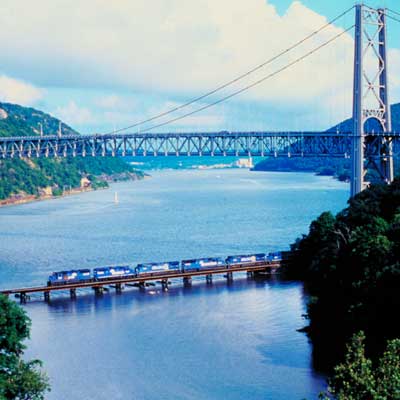Saturday, April 21, 2007
The future competitiveness of the infrastructure system presents an engineering leadership challenge
The USA’s infrastructure systems have deteriorated to the point where this country’s future economic competitiveness is in jeopardy and our elected officials, who are entrusted with safeguarding our nation’s future, have ignored the warnings. Our elected officials’ failure to maintain and improve upon the system inherited from the prior generation can be traced to a lack of political will, the influence of special interest groups, the absence of market-based decision making, and – most specifically and significantly – the use of earmarks, otherwise known as pork barrel politics. Reversing or even arresting the decline of infrastructure systems will require creative solutions and visionary leadership from the engineering community.
In this context, there are two readily-apparent ways for engineers to effect change. First, engineers need to position themselves better by seeking public office, which would provide them with proximity and access to the legislative process. Second, in order to help Congress to better understand technology transfers and complex scientific principles before implementing new policies, the engineering discipline should actively recruit and pitch its professionals for placement on lawmaker and committee staffs. This second tactic is likely to require a cultural shift in the engineering profession. Talented engineers will not readily pursue alternative but important career paths if they think that their work will be dismissed or devalued by the profession, including its societies and licensing boards. Likewise, lawmakers and committees are unlikely to understand the benefits of having engineers on their staffs and deferring to their judgment on important social issues without a significant public relations campaign. The stakes are high enough, however, that extreme measures are necessary.
In this context, there are two readily-apparent ways for engineers to effect change. First, engineers need to position themselves better by seeking public office, which would provide them with proximity and access to the legislative process. Second, in order to help Congress to better understand technology transfers and complex scientific principles before implementing new policies, the engineering discipline should actively recruit and pitch its professionals for placement on lawmaker and committee staffs. This second tactic is likely to require a cultural shift in the engineering profession. Talented engineers will not readily pursue alternative but important career paths if they think that their work will be dismissed or devalued by the profession, including its societies and licensing boards. Likewise, lawmakers and committees are unlikely to understand the benefits of having engineers on their staffs and deferring to their judgment on important social issues without a significant public relations campaign. The stakes are high enough, however, that extreme measures are necessary.
Join the CCI Port Infrastructure Blog
The ASCE Committee on Critical Infrastructure (CCI) invites your participation in the Port Infrastructure discussions at the Critical Infrastructure Blog. Post a comment here to get started. For additional information, contact Doug Sethness at doug.sethness@ch2m.com.
New GAO Port Risk Assessment Evaluation Available
This is a site for the GAO publication number GAO-07-412 on Port Risk Assessment published March 28, 2007.
This report was prepared under the authority of the Comptroller General to examine (1) challenges port authorities have experienced as a result of recent natural disasters, (2) efforts under way to address these challenges, and (3) the manner in which port authorities plan for natural disasters. GAO reviewed documents and interviewed various port stakeholders from 17 major U.S. ports.
This report was prepared under the authority of the Comptroller General to examine (1) challenges port authorities have experienced as a result of recent natural disasters, (2) efforts under way to address these challenges, and (3) the manner in which port authorities plan for natural disasters. GAO reviewed documents and interviewed various port stakeholders from 17 major U.S. ports.
Is Infrastructure Sector Nomenclature Confusing?
The description of the nation's critical infrastructure on the ASCE Infrastructure Report Card is different from the designated list of critical infrastructure and key assets found in Homeland Security Presidential Directive - 7 and a multitude of DHS plans and operating directives (such as the NIPP, NRP, and NIMS). While the difference is understandable since the nomenclature evolved on two separate tracks, is the situation causing unnecessary confusion? Should there be an effort to establish a common reference the critical infrastructure and if so, what makes the most sense?
Subscribe to:
Comments (Atom)

